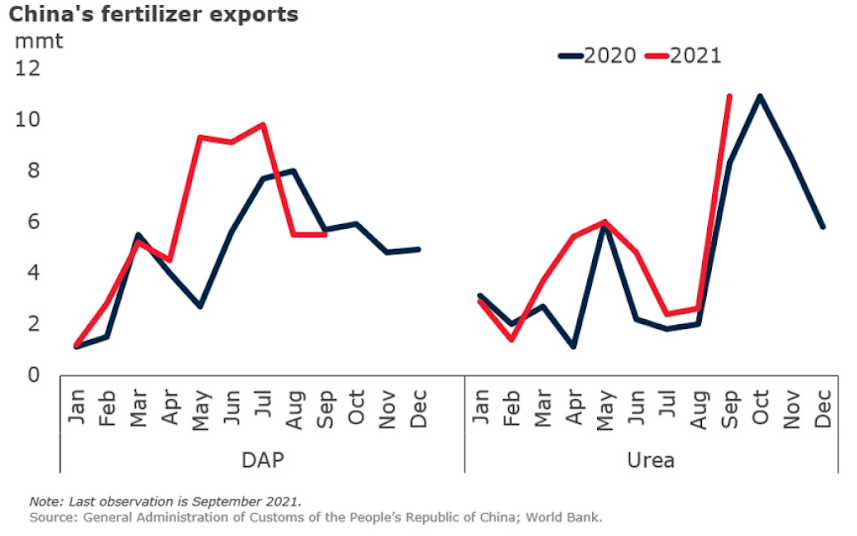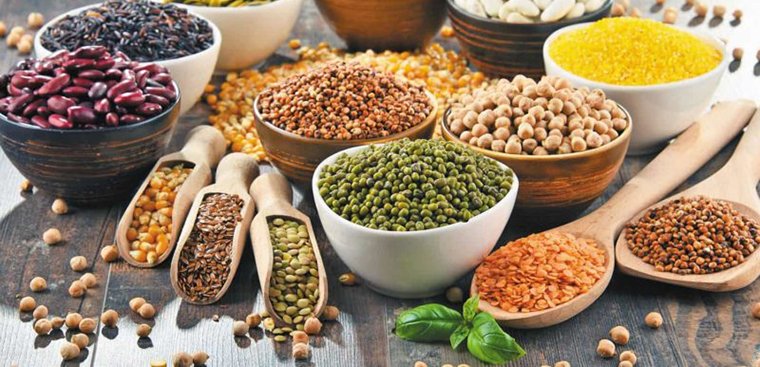HIGHLIGHTS
- Although Vietnam does not import 100% of urea like Southeast Asian countries, fertilizer production is currently heavily dependent on imported raw materials, making domestic fertilizer prices fluctuate strongly.
- The fertilizer crisis occurred with a series of causes, of which the main cause was a lack of supply and a sharp increase in demand.
- The fertilizer market is currently seeing supply shocks and record-high prices, which means worldwide food inflation continues to worsen even further.
FULL ARTICLE
Global fertilizer crisis
In the world market, the North American fertilizer price index is hovering around an all-time high at USD 1,072.87/ton, while the spot urea price in China has increased by more than 200% compared to the beginning of 2021.

The record high fertilizer price is a global problem and Vietnam is not out of the influence. Although Vietnam does not import 100% of urea like Southeast Asian countries, fertilizer production is currently heavily dependent on imported raw materials, making domestic fertilizer prices fluctuate strongly. DAP fertilizer price ranges from 18,500 – 23,000 VND/kg, Ninh Binh urea costs 18,000 VND/kg etc. These prices all simultaneously increased by more than 10,000/kg compared to 2020. Domestically produced fertilizers have lower prices than fertilizers imported from China, Korea, etc.
So what causes fertilizer prices to peak?
Since the beginning of January this year, the world fertilizer price has continuously increased, which has significantly affected the global food security situation. The fertilizer crisis occurred with a series of causes, of which the main cause was a lack of supply and a sharp increase in demand.
Shortage of fertilizer supply
First, the price of raw materials for fertilizer production has increased sharply, directly pushing up producer prices. Specifically, the price of sulfur increased by 233% (from 95 USD/ton to 221 USD/ton), sulfuric acid (H2SO4) increased by 232%, apatite ore increased by 7.7%, etc. Ammonia (NH3), the main raw material for the production of DAP, NPK, urea, etc. also increased from 30 to 200%. Typically, Yara company had to increase the selling price of ammonia in Florida – USA to 825 USD/ton CFR for delivery in November 2021, an increase of $160/ton compared to the old price.
Second, factories producing fertilizers and input materials are forced to reduce production capacity or even close factories. In Europe, Norwegian company Yara announced a 40% reduction in capacity across Europe, while Germany’s BASF closed its NH3 plants in Antwerp and Ludwigshafen. Gas accounts for about 80 percent of the cost of producing nutrients and costs four to five times higher than usual, according to industry group Fertilizers Europe. Currently, the European region accounts for most of the world’s NPK production and exports, therefore, stopping production immediately caused a serious decrease in supply.

In addition, Chinese authorities are imposing new barriers on fertilizer exporters to ensure domestic supply, amid growing concerns about rising electricity prices and food production. This move could exacerbate global price shocks and food inflation.

Consumption (fertilizer) demand increased
In the past year, harvest output has decreased, while demand has increased, causing prices of agricultural commodities to skyrocket. The FAO Food Price Index in November rose to its highest level in more than 10 years, averaging 134.4 points – the highest level since June 2011 and up 27.3 percent year-on-year, this index in October is 132.8 points. Food prices increase lead to farmers expanding production in order to increase output and profits. Along with that, trade and service industries are affected due to the impact of covid 19, making people more inclined to turn to agriculture. The increased demand for food leads to an increase in demand for fertilizer, pushing fertilizer prices to record highs. Farmers do not benefit, but are also affected in return.
Other causes
Besides, there are many other objective reasons that push up fertilizer prices. For example, the shortage of containers due to congestion at seaports. When the pandemic broke out, China closed its borders, disrupted the flow of goods, and congested seaports, causing container turnaround times to be twice as long as before the pandemic. The port of Long Bay, L.A., or the port of Rotterdam in the Netherlands also faces a similar situation. The scarcity of containers pushes up container rental rates, pushing up ocean freight rates. In 2021, ocean freight rates have increased by 5-10 times. According to the United Nations Conference on Trade and Development (UNCTAD), global import prices may increase by 11% and consumer prices by 1.5% from now until 2023 due to a sudden increase in freight rates.

Impact of fertilizer crisis
The fertilizer market is currently seeing supply shocks and record high prices, which means worldwide food inflation continues to worsen even further.
Global food prices have risen more than 30% in the past 12 months, reaching the top level in more than a decade. The Food and Agriculture Organization of the United Nations (FAO) said that the food price index in November was 134.4 points – the highest level since June 2011 and an increase of 27.3% over the same period last year. Last year, this index in October was 132.8 points. The FAO Cereal Price Index in November rose 3.1% month-on-month and 23.2% year-on-year. Of which, wheat prices have peaked since May 2011. The dairy product price index recorded the largest month-on-month increase, up 3.4% compared to October. Global sugar prices in November increased by 1.4% compared to October and increased by nearly 40% compared to October last year.
Rising food prices directly affect global food security, especially putting pressure on poor countries. It is estimated that about 1 out of 10 world population has faced a state of food insecurity.

In the Americas, about 30% of Brazil’s coffee farmers did not receive the fertilizer they ordered, or worse, could not find any fertilizer to buy. This might lead to losses over the next two years as the soil has not enough nutrients to support the growth of the 2023 crop crops.
Europe is also one of the regions most affected by the energy crisis. Fertilizer scarcity could limit grain production and quality in the EU, the world’s largest wheat exporter and a major supplier of barley. Local farmer groups estimate that rising fertilizer costs could add 4 billion euros ($4.6 billion) to the cost of agriculture.
In Asia, India imports up to a third of fertilizers, especially urea and DAP. The South Asian country now has an agricultural sector that employs 60 percent of the country’s workforce and accounts for 15 percent of its economy , worth $2.7 trillion. Indian farmers have accepted to buy fertilizers on the black market at prices up to 50% higher. The shortage of supply may affect the production of staple crops such as wheat, rapeseed, etc., even the entire economy of this country. Recently, India plans to increase fertilizer subsidies to a record 20.64 billion USD, with a determination to rescue the country’s agricultural industry from the crisis.
Hong Dao













